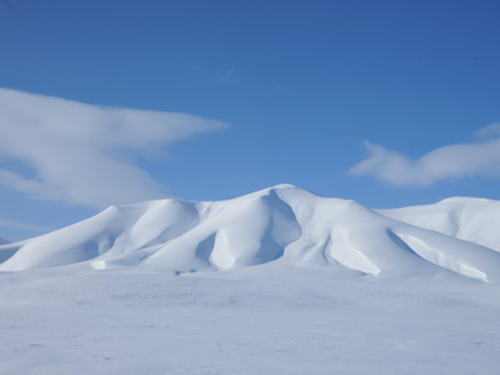On Svalbard, a group of islands in the Barents Sea, with some of the worlds northerly most land and icescapes (~78o-80oN); climate warming has been occurring at 4 times the planetary averages, as the High Arctic switches to becoming more and more a rain dominated in winter system with warmer summers. These winter-rain, or rain on snow events (ROS) have historically been the demise of caribou and reindeer across the Arctic. However, the combination of summer and winter warming has led to vegetation shifts on Svalbard whereby erect grasses, as opposed to flat patches of moss are becoming increasingly dominate.
Using a long-term set of Svalbard reindeer blood samples collected at the end of winter by Norwegian colleagues from the Nature Institute of Norway; University of Oulu Finland PhD student Tamara Hiltunen and Professor Welker have documented a Svalbard reindeer winter-diet switch from moss to grass. This diet switch appears to have coincided with a growth in the populations even as icing (ROS) of a few cm covers the low growing moss but the erect stems and leaves of grasses are protruding above the ice layer and being eaten by the reindeer in winter.

Svalbard winter landscapes. Photo: Eric Ropstand
These findings depict the complexity of the High Arctic, the interactions between winter and summer climate changes, vegetation responses to a new Arctic and the foraging ecology adaptation of one of the world’s most iconic Arctic species, the Svalbard Reindeer.
Other coauthors of this research are: Professor Jouni Aspi and Dr. Maria Vaisanen from the University of Oulu; Professor Audun Stien, UiT The Arctic University of Norway; & Dr. Eric Ropstad, Norwegian University of Life Sciences.
